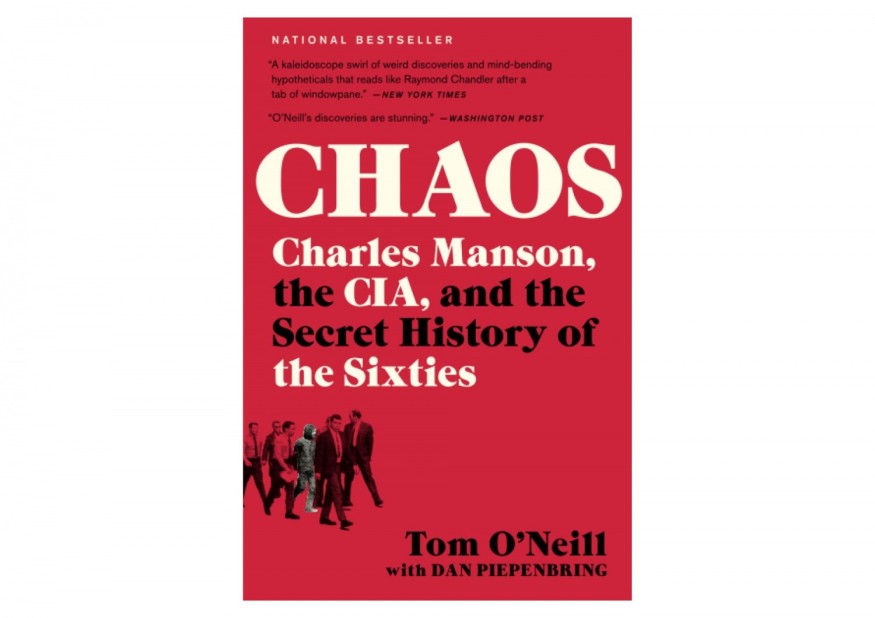
Tom O'Neill's "Chaos" takes readers on a captivating exploration of the Manson Family murders and the shadowy side of the 1960s counterculture. O'Neill boldly challenges the traditional narratives around the case. He digs deep into the conspiracy theories, government secrecy, and the complex connections between Hollywood and crime. Through his 20-year investigation, O'Neill unveils surprising insights into the FBI's role in the Manson case.
Over two brutal nights in Los Angeles, Charles Manson's young followers, obedient to his commands, mercilessly killed seven people, including the pregnant actress Sharon Tate. These horrific crimes spread national paranoia, marking the symbolic end of the 1960s. Manson's infamy epitomizes an era where charismatic leaders mingled with societal upheaval, blurring lines between free love and manipulation, and visions of utopia or dystopia seemed just an acid trip away.
Provocative Narrative and Diverse Perspectives
"Chaos" stands out due to O'Neill's gripping storytelling approach rather than a straightforward recounting of facts. He skillfully integrates personal stories, interviews with pivotal figures, and historical background, demonstrating his prowess as a masterful storyteller.
According to Kirkus Reviews, O'Neill poses provocative questions about who influenced Manson and his followers toward their violent acts. O'Neill's narrative spans various conjectures, from prosecutor Vincent Bugliosi to intelligence operations. He suggests that manipulating psychologically vulnerable individuals, possibly through the influence of LSD and charismatic leadership, served particular agendas, including controlling dissent and promoting racial division.
O'Neill's thesis offers multiple perspectives rather than a singular theory. He explores diverse possibilities, from Manson as an agent provocateur to the involvement of figures like record producer Terry Melcher and "Beach Boys" drummer Dennis Wilson. The book even speculates on Roman Polanski's connections, including revisiting the infamous "Pig" message written using Tate's blood.
Peeling Back Layers of Misinformation
In contrast to conventional true crime narratives that neatly resolve all uncertainties, "Chaos" embraces its topic's intricate and multifaceted nature. O'Neill, a respected investigative journalist, painstakingly dismantles layers of misinformation and partial truths surrounding the Tate-LaBianca murders. His determined investigation takes him beyond conventional boundaries, delving into obscure corners of Los Angeles and uncovering surprising links and revelations from confidential FBI documents.
A Washington Post review stated that "Chaos" adds valuable perspectives to existing literature despite not offering a definitive theory on the crimes and their motives. O'Neill aims not to provide a conclusive narrative but to dismantle the official story, a goal he achieves successfully. While the traditional motive of "Helter Skelter" loses credibility, Manson's death in 2017 suggests that many mysteries surrounding the gruesome events of the summer of 1969 may never be fully unraveled by history.
Incompatible Storylines and Circumstantial Evidence
According to a review in The Los Angeles Times, O'Neill acknowledges in "Chaos" that the various storylines suggested by his research are fundamentally incompatible. For instance, the idea that Manson collaborated with law enforcement or intelligence agencies is difficult to accept and remains purely speculative. Much of O'Neill's discoveries are based on circumstantial evidence, such as Manson's alleged connections to Louis West, a CIA-funded researcher known for mind-control experiments.
Despite O'Neill's extensive efforts, he struggles to establish a direct link between Manson and figures like West. Moreover, while O'Neill is mindful of the tendency toward conspiracy theories, he wonders if his determination to piece together the Manson puzzle overlooks more straightforward explanations like incompetence or distraction, which are common in human affairs. He also considers the likelihood that stories surrounding Manson have become increasingly embellished over time.
Final Thoughts
"Chaos" reflects O'Neill's unwavering quest for truth, pushing readers to confront unsettling truths about justice, morality, and human nature. It compels readers to reassess their preconceptions about the case. O'Neill exposes uncomfortable realities about how charismatic leaders manipulate, the vulnerabilities inherent in troubled times, and the lasting impacts on society. Whether you are a true crime buff or enjoy captivating narratives, "Chaos" is a compelling must-read that will provoke deep reflection after finishing it.












